Nature is gradually saying goodbye to winter, and there are still many grapes hanging on the vines, at least where I am present year after year, at the "Wimmle" (that's what they call the Wümmet=wine harvest in the Bündner Herrschaft) in eastern Switzerland. Waiting for the physiological ripeness of the grapes, waiting for enough degrees Öchsle, waiting for exhausting days in the vineyard. The weather report says: "Snow down to the lowlands. Zero degrees down to 600 metres". That makes me anxious. Will we get the harvest into the cellar in time to make good wine this year?
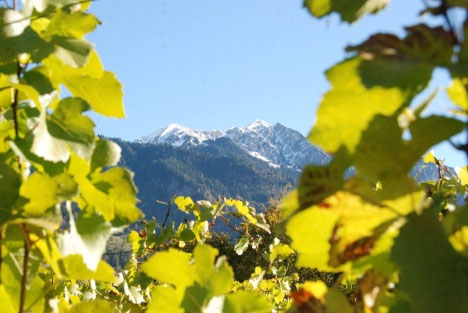 |
| Snow down to the lowlands. |
Thank God I'm not a winegrower. He bears the responsibility, he makes the decisions. The product must give him income and, of course, pleasure. I am just a helper who, together with about thirty other helpers, goes to the vineyards in October to put grape after grape - after a thorough examination - into a small box. Somehow the berries then belong to me - for a brief moment - and I think I can already see the sparkling wine, feel it on my palate, enjoy an infinitely long finish. This year I have to wait, wait, wait like so many others who are still working in the vineyard now.
"Tardive" - late or delayed is what you read; "tardive" is what I hear in winemaking circles, not only in Switzerland, but also in many areas of France. But the Bündner Herrschaft is being hit particularly hard. The Bündner Herrschaft? There are four municipalities, all wine villages, that bear this historical designation: Jenins Malans, Fläsch and Maienfeld, 635, 530, 528 and 504 metres above sea level.
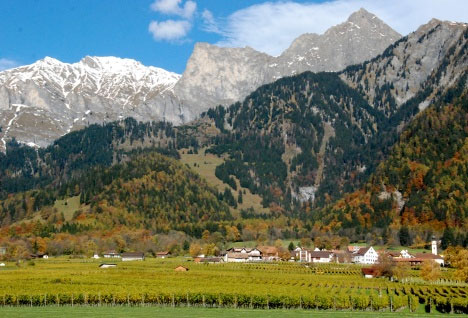 |
| Jenins% the highest-altitude municipality in the Bündner Herrschaft. |
There, almost at the late autumn snow line, many vines are still guarding their yield, waiting for the harvest. One climatic feature favours this very special wine region of Switzerland: the Föhn. This is a warm, dry downdraft wind that helps determine the climate, especially in the Alpine region. About 400 hectares of vines in the Bündner Herrschaft benefit from the warm south wind, especially in late autumn, which often blows for days on the slopes protected from the cold north wind. The vintner then speaks of the Föhn, which makes the grapes "cook". In addition to the limestone-rich slate soils and the southern exposure, it is above all this foehn that makes the wine region on the upper course of the Rhine the "Burgundy of Switzerland". Here, Pinot Noir, usually vinified as a strong barrique wine, often darker, more filigree, fruity, but also more elegant than most Pinot Noirs in Switzerland, leads the sceptre.
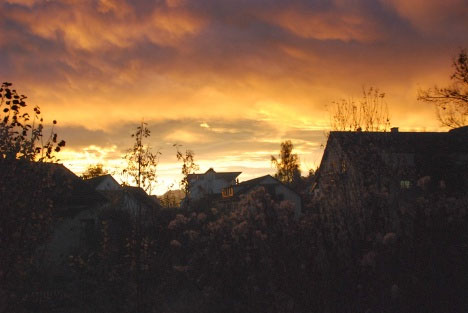 |
| Föhn mood. The sky and the grapes are boiling. |
But all this can be looked up, even in the tourist advertising of the canton Graubünden, and it is in almost every publication on Swiss wine. It is something else that lures me - usually for two or three weeks - to the vineyards of the Bündner Herrschaft again and again: vines in nature. The vineyard area is too small to be perceived as a monoculture. There are small parcels of land that nestle together, even interlock with each other. And each plot belongs to a different winegrower, there are about 370 vine growers, the smallest farm cultivates just 140 square metres. In this patchwork of vines and vineyards, the individuality of the winegrowers and of viticulture in Switzerland is revealed - as hardly anywhere else in a wine region. Some harvest early, others late, maybe one or the other even too late.
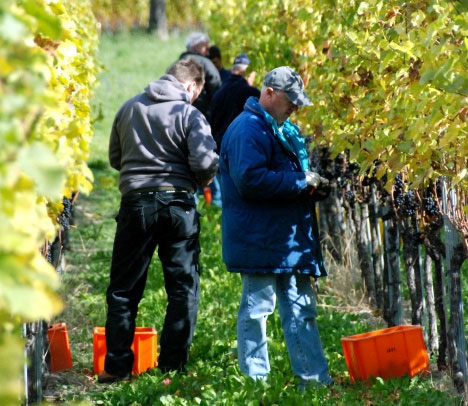 |
| Tweezer work% laborious manual work. |
Some protect their vines with nets, others treat the birds to little tidbits; some reduce the yield again and again, others try to increase the yield with all kinds of "home remedies". What fascinates me most is the juxtaposition of grape varieties, planting density, vine age and cultivation methods. Here, the later wine still leads a very, very individual life. "My" winegrower tends to be the last to fetch the grapes. He trusts the "grape cooker Föhn" far more than all chemicals and fertilisers; he relies on a careful hand harvest, this time almost a tweezer job, and he uses the diversity of varieties on his 6 hectares to make very different wines. Even if Pinot dominates, the palette ranges from Pinot Noir from various sites to the idiosyncratic Schiller to the Malanser grape, the rare Completer.
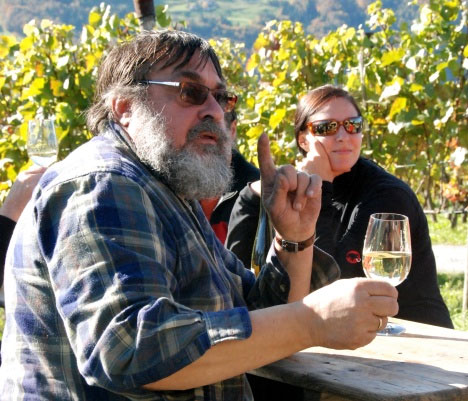 |
| Thanks to the vintner. A glass from last year's harvest as an aperitif. |
Last week we were in the vineyard for the first time this year for only two days. Then the foehn "collapsed", rain came, cold settled in. The winegrower emailed his helpers: "Oh, what can I say, I'm really worried. I poor little wretch, I don't know the weather planning!" And so we wait, scissors in our pockets, for the next assignment. Eventually the foehn is back - it's small-scale weather that dominates here - and we move again for days among the colourful autumn leaves of the vines. After three four hours of stooped work, we sit down to lunch in the open air, accompanied by the wine we harvested here one or two years ago. On the horizon the white mountains, in front of us the autumn-coloured leaves and above us the so typical Föhn clouds.
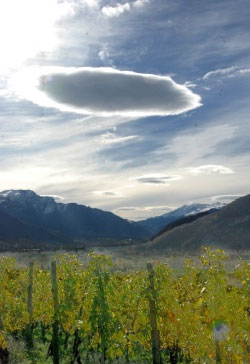 |
| Foehn mood over the Rhine valley. All Saints' Day. |
"Do you see the halo in the sky?" asks my neighbour. Despite the Protestant part of the canton, the sky is Catholic today. It proclaims "All Saints' Day" (1 November) and does not leave the "poor souls" (2 November) alone. Not even us in the vineyard. The foehn will manage to drive the Öchsle up again, even if the weather fairy announces for the umpteenth time: "Snow down to the lowlands".
Sincerely
Yours sincerely